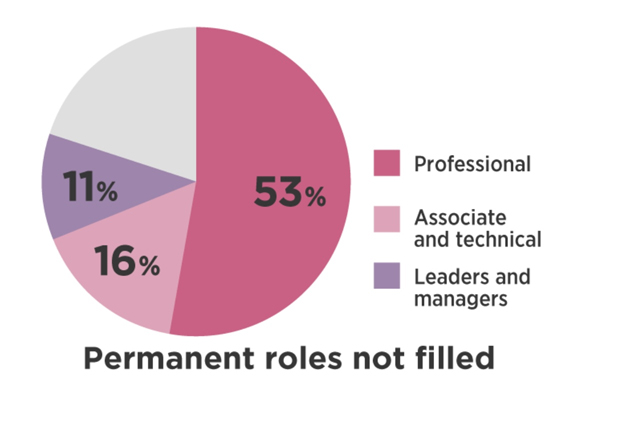Public sector employment confidence is at a 12-year high, and women are set to be the main beneficiaries from the increase in job opportunities, according to the CIPD, the professional body for HR and people development. The latest Labour Market Outlook report from the CIPD and The Adecco Group shows that UK public sector employment growth is expected to increase in line with the private sector for the first time since 2008.
The increase in employment confidence in the public sector coincides with a number of pledges by the new Government to boost investment in public services. Women already account for around two thirds of the public sector workforce, and the report suggests that increased hiring by public sector employers will further boost the number of women in work.
Overall, the quarterly survey shows that UK employer demand for labour remains strong. The report’s net employment score – a measure of employment confidence in the next three months – has remained strongly positive at +22, compared to +21 the previous quarter. The increased employment confidence in the public sector compensates for a fall in the private sector. The net employment score in the public sector – the proportion of employers expecting to increase rather than decrease total staffing levels – increased for the second quarter in a row from +14 to +21, while net employment intentions in the private sector fell from +25 to +21.
TIGHT LABOUR MARKET
Employment confidence is highest in healthcare (+28), followed by construction (+27) and the voluntary sector (+23). Meanwhile, net employment intentions among manufacturing employers have fallen from +22 to +6 over the past three months.
However, around two-thirds of employers (64%) with vacancies report that at least some of these jobs are proving hard to fill. In addition, almost 4 in 10 (38%) employers report being unable to fill a permanent vacancy during the past year, with roles in healthcare, engineering, teaching and IT being the most challenging. Around a quarter (24%) of all employers have increased investment in skills in the last two years to address hard to fill vacancies. One in five (19%) have offered more apprenticeships, rising to 29% among public sector employers. This suggests the Apprenticeship Levy may be acting as a catalyst for more activity, according to the report.

“After more than a decade of contraction and pain, the public sector is now very much part of the good news employment story. The recent recovery in public sector employment is undoubtedly one of the key reasons behind the recent strong gains in the female employment rate, and this looks set to continue in the near to medium term,” stated Gerwyn Davies, Senior Labour Market Adviser for the CIPD. “However, we should not lose sight of the net loss of more than 300,000 jobs in the public sector since 2010 and the challenges this has presented public service employers and employees in delivering crucial public services. Public sector organisations must prioritise managing and developing their workforces to empower and motivate existing public service employees, not just increase headcount.”
UPSKILLING FOCUS
Adding to his comments, Alex Fleming, Country Head and President of Staffing and Solutions, the Adecco Group UK and Ireland, said: “The increase in public sector employment confidence is very positive for our labour market and shows that demand remains strong, despite the recent times of political uncertainty. The report’s findings also suggest that the number of women in work is likely to continue to rise which is promising, as a strong focus on diversity and inclusion is proven to be highly beneficial to organisations.
“However, there is still evidence of hard to fill vacancies, with 38% of organisations saying they have been prevented from filling a permanent role in the last 12 months. It’s therefore important that organisations continue to focus on developing and upskilling their employees through training and apprenticeships, to not only help tackle recruitment challenges, but also create a working environment where all talent can develop and thrive.”
Click here for more information about the report.







































